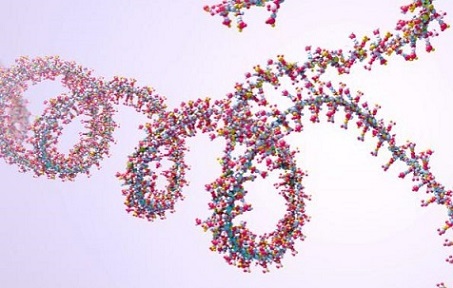New revolutionary imaging technique reveals Circular RNAs encoded by viruses including SARS-CoV-2
Nikhil Prasad Fact checked by:Thailand Medical News Team Jul 26, 2024 8 months, 3 weeks, 4 days, 9 hours, 24 minutes ago
Medical News: In a groundbreaking study, scientists have unveiled a new approach for the detection, imaging, and quantification of human and viral circular RNAs (circRNAs). The team, comprising researchers from prestigious institutions such as New Jersey Medical School at Rutgers University, Virginia Commonwealth University, and Shenzhen University Medical School, has developed an innovative method known as amplified fluorescence in situ hybridization (ampFISH). This
Medical News report delves into the study’s key findings and their implications for the understanding of circRNAs in various diseases.
 New revolutionary imaging technique reveals Circular RNAs encoded by viruses including SARS-CoV-2
Understanding Circular RNAs
New revolutionary imaging technique reveals Circular RNAs encoded by viruses including SARS-CoV-2
Understanding Circular RNAs
Circular RNAs are unique RNA molecules with covalently closed ends, making them resistant to exonucleases like RNase R. Unlike linear RNAs, circRNAs lack the typical 5′ cap and 3′ tail structures. These molecules have been linked to numerous diseases, including diabetes, neurodegenerative diseases, osteoarthritis, cancer, and cardiovascular conditions. Moreover, circRNAs hold potential as biomarkers for various ailments, such as cancers and autoimmune disorders.
The Novel ampFISH Technique
The ampFISH technique is a significant advancement in the field of RNA imaging. It employs a pair of hairpin probes that bind next to each other on the target sequence, initiating a hybridization chain reaction (HCR) that amplifies the fluorescent signal at the site. This method allows the selective identification and imaging of circRNAs and their linear counterparts from the human genome, SARS-CoV-2, and human cytomegalovirus (HCMV).
Key Findings of the Study
-Specific Detection of Circular RNAs
The study confirmed the specificity of ampFISH for detecting circRNAs through in situ RNase R treatment, which degrades linear RNAs while leaving circRNAs intact. This selective detection was further validated using mismatched ampFISH probes and probes targeting non-contiguous sequences on the target RNAs. The results demonstrated that ampFISH could simultaneously detect circRNAs and their linear counterparts within the same cell with single-molecule sensitivity, enabling detailed studies of circRNA biogenesis, localization, and function.
-Imaging Human circRNA: circHIPK3(2)
The researchers applied the ampFISH technique to detect a well-characterized human circRNA derived from the HIPK3 gene, circHIPK3(2). Using a pair of ampFISH probes designed to target sequences adjacent to the back-splice junction (BSJ) of circHIPK3(2), they successfully imaged the circular RNA in human retinal pigment epithelial cells. The specificity of the detection was confirmed through RNase R treatment and control experiments using negative strand probes and RNase A treatment, which digests all RNAs.
-Imaging Viral circRNAs: SARS-CoV-2 and HCMV
The study also explored the detection of viral circRNAs usi
ng ampFISH. The team identified and imaged a well-characterized SARS-CoV-2 encoded circular RNA (NC_045512.2:29122|28295) in infected Vero cells. The ampFISH probes yielded strong signals for the positive strand circular RNA, even after RNase R treatment, confirming the presence of circRNAs in the virus-infected cells. The researchers also detected a well-characterized HCMV circular RNA (FJ616285.1:30092|29489) in HCMV-infected MRC-5 cells. The specificity of the detection was confirmed through RNase R treatment and the use of negative strand probes.
Implications for Disease Research
The ability to image and quantify circRNAs with high specificity and sensitivity has significant implications for disease research. CircRNAs are known to play crucial roles in various diseases, including cancer and viral infections. The ampFISH technique enables researchers to study the biogenesis, localization, and functions of circRNAs in greater detail, providing insights into their roles in disease pathogenesis and potential as therapeutic targets.
Upregulation of circHIPK3(2) in HCMV-Infected Cells
One of the notable findings of the study was the upregulation of circHIPK3(2) expression in HCMV-infected cells. This observation is consistent with previous studies indicating increased expression of circHIPK3(2) during viral infections. The ampFISH technique allowed for the precise quantification of circHIPK3(2) molecules in both infected and uninfected cells, highlighting its potential for studying changes in circRNA expression during disease progression.
Conclusion
The development of the ampFISH technique represents a significant advancement in the field of RNA biology. By enabling the specific detection and imaging of circRNAs with high sensitivity, this method opens new avenues for research into the roles of circRNAs in various diseases.
The study’s findings, published in the peer-reviewed journal Nucleic Acids Research, provide a robust foundation for future investigations into the functions and biogenesis of circRNAs.
https://academic.oup.com/nar/advance-article/doi/10.1093/nar/gkae583/7720765#
For the latest on Circular RNAs, keep on logging to Thailand
Medical News.
Read Also:
https://www.thailandmedical.news/news/breaking-news-chinese-researchers-discover-circrnas-encoded-by-sars-cov-2-virus-that-can-cause-cancer-millions-expected-to-get-cancer-eventually
https://www.thailandmedical.news/news/human-circular-rna-hsa-circ-0000231-can-be-used-as-a-tumor-biomarker-for-gastric-cancer
